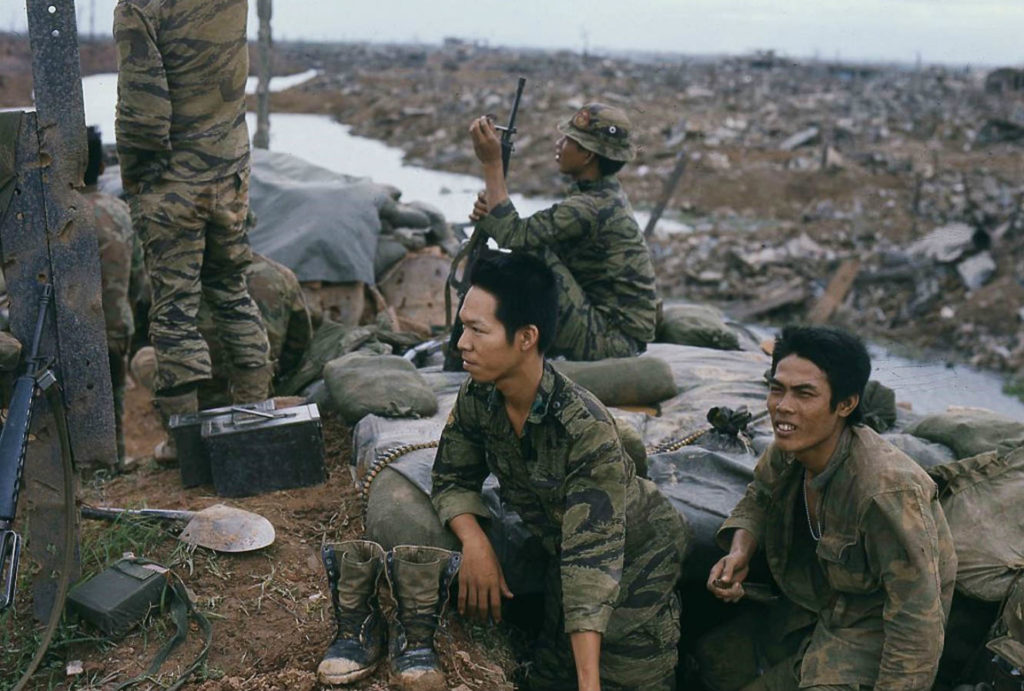

Editor’s Note: This is the fifth and final installment in a short series before the documentary series The Vietnam War (directors Ken Burns and Lynn Novick) premieres this Sunday. Do not miss Part I (“They Didn’t Fight With One Hand Tied Behind Their Backs“), Part II (“The Draft Was a Moral Disgrace“), Part III (“Peace Marchers Didn’t Turn U.S Policy Around“), and Part IV (“U.S. Journalists Didn’t Lose the War, Celebrate the Enemy, or Vilify American Soldiers“).
Reduced U.S. military aid contributed to South Vietnam’s collapse in the spring of 1975. But those congressionally imposed reductions (not a cutoff, as is often alleged) were not the only cause, and in all likelihood not the most important.
South Vietnam’s strategy after the U.S. military withdrawal played a crucial part in setting the stage for the final disaster. After the Paris ceasefire ended U.S. military involvement in early 1973, President Nguyen Van Thieu’s war aim remained the same: to defend every acre of ground that government soldiers could reach, and ultimately to control the entire country.
A half-million American troops and colossal U.S. firepower had not reached that goal. With the Americans gone, it was completely unrealistic. But Thieu did not change his strategy (nor did U.S. officials urge him to). Rather than figuring out what they could effectively do with reduced resources, Saigon’s leaders kept operating just as they had when the Americans were still in the war.
The South Vietnamese conducted large-scale offensive operations for many months after the ceasefire, at heavy cost in casualties and supplies and spreading their forces even more widely into positions with little or no strategic value that they could not possibly hold against any serious attack. Inevitably, many of those enclaves were eventually lost, and with them large quantities of troops, weapons, ammunition, and supplies, Those losses magnified the shortages from reduced U.S. aid, unnecessarily damaging Saigon’s ability to defend more important areas.
As the war entered its final months, South Vietnam had other vulnerabilities, too. Three years of unprecedentedly high casualties and deep economic crisis had devastated civilian and military morale. Desertions soared, while increasing public anger at official corruption led to massive street protests.
In March 1975, after a new Communist offensive captured the town of Ban Me Thuot in the central highlands, Thieu finally decided to change strategy and pull back overextended forces. But he did nothing to prepare field commanders to carry out the withdrawal order. With a few honorable exceptions, senior officers simply fled to safer areas, leaving their subordinates with no directions or plans for managing the retreat. Predictably, the withdrawal turned into a chaotic rout, leading to South Vietnam’s final defeat in just seven weeks.
Blaming the debacle entirely on reduced U.S. aid was (and remains) a convenient way for American and South Vietnamese leaders to pin the fault for Saigon’s defeat on Congress and not their own actions. But history makes clear that mistaken strategy and disastrously bad leadership were critical as well.
As a reporter for the Baltimore Sun, Arnold R. Isaacs covered both the war in Vietnam and the antiwar protests at home. He is the author of Without Honor: Defeat in Vietnam and Cambodia, Vietnam Shadows: The War, Its Ghosts, and Its Legacy, and From Troubled Lands: Listening to Pakistani Americans and Afghan Americans in Post-9/11 America. Isaacs lives in Anne Arundel county, Maryland.
